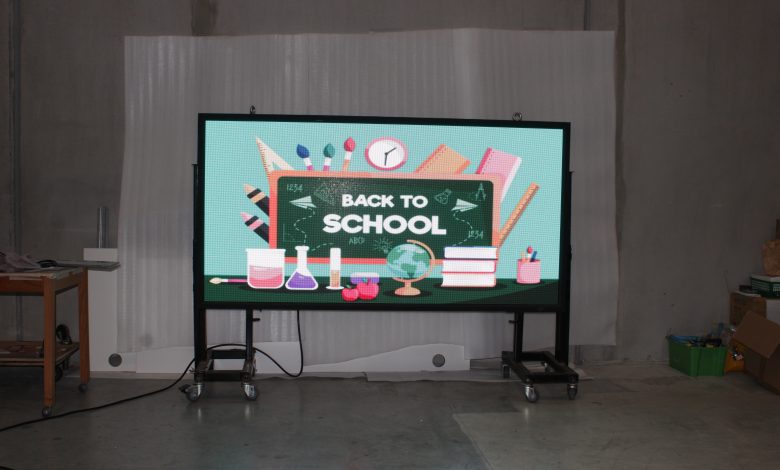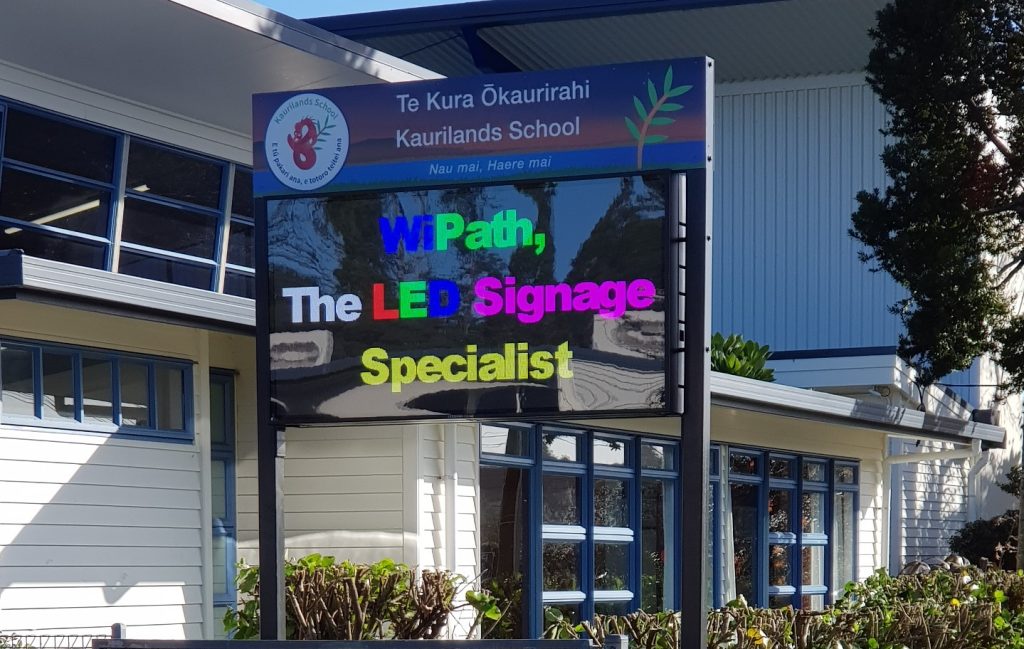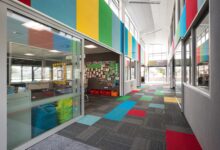
Once-upon-a-time, there was paper circulars, newsletters and the good old-fashioned school notices for students to bring home to caregivers.
Of course, paper adverts and school notices still exist, but there’s no guarantee that they’re read once they’re delivered or posted in a public space. Beyond this, producing, printing and distributing paper communication can be time consuming, and increase your schools’ environmental footprint. Paper communications can become lost or damaged, so the message is not effectively communicated.
Read the Term 3 edition of School News HERE
Enter digital signage. Depending on its position, digital signage can be an appealing, engaging and fuss-free way to notify the school community (including whānau and caregivers as well as teachers and students) of recent achievements, deliver notices – including emergency alerts – and boost the sense of community and togetherness in your kura.
Large screens near the entrance of the school, or the pick-up and drop-off points may be a good option. Screens could also be placed around the offices, or other areas where there is a high volume of parents and caregivers. This makes digital signage into a community-building exercise, ensuring that whānau remain engaged and informed about their tamariki and the wider goings-on of the school.
Notices displayed on screens could include meeting times and available extracurricular activities, student achievements, and important school information and dates to remember. Digital signage could even be used to point parents and caregivers to other communications. A message could be displayed, for example, saying ‘check your emails’, or ‘more information soon’.
For new or potential students, digital signage can be an effective way to showcase opportunities at the school. Photos or videos of students participating in school activities, or a welcome message from the Principal could be displayed in reception areas.
An easy to administer software solution to manage digital signage is essential. Most work through a cloud system, where educators can control signage from their computers. Systems are also becoming increasingly user-friendly, with drag-and-drop designs and pre-formed templates for educators to use.

There are also sophisticated scheduling systems that can be utilised. One-off notices or recurring reminders can be set so that the system runs with minimal supervision. Displays can also be programmed to turn on and off at designated times.
Digital signage can be multipurpose, depending on its position. A digital display in a gymnasium, for example, can double as a scoreboard during games. For senior students, signage could be used to stream news broadcasts during break times, helping students to remain up to date with news and current affairs.
Finally, a digital signage network could present a learning opportunity. Ākonga of all year-levels could learn graphic design principles, for example, creating their own notices for events like school fairs, art shows and musical performances. With older students, snippets of these performances could be aired, or a selection of images displayed, creating a shared experience within the school community.
As for the actual hardware, a variety of sizes and screen options are available. Digital signage can be complex with an LED display, or the screen can be much simpler, depending on its purpose and your school’s needs. Your school may choose to install one digital sign at the entrance to the school, or a serious of networked displays around the school.
Software solutions can divide signs into zones. Bespoke messages can then be broadcast on different screens around the school. This may be particularly useful if different content needs to be displayed to different year levels or cohorts.

Walid Hadi, Managing Director and Chief Engineer at WiPath Communications Ltd, said the most important consideration when purchasing digital signage is selecting the right provider. “Whilst there are some suppliers offering cheap solutions these typically have very short lifetimes as, in most cases, do the suppliers.
“With an expected life for a quality sign of between 12 and 20 years you need to be sure the supplier is going to be around to service the sign. There are very few compatible parts between different sign factories and therefore when a supplier goes out of business, all access to parts is lost. The supplier should be able to guarantee parts availability for at least 10 years and they can’t do this if they have only been in business for five minutes.
“The supplier should have an engineering focus. Any company that is heavily sales focussed in this industry does not last. They should have ancillary business lines so that when the sign business slows as it did during COVID, they will survive to continue providing the service you need,” Mr Hadi said.
“It is easiest to think of an electronic sign as just another computer monitor. Practically anything that can be displayed on a computer can be displayed on an LED sign. The only restrictions tend to be regulatory not technological. Options are available for controlling signs directly from a computer, from a smart phone or via an application that sits in the cloud and can be addressed from any browser (with appropriate security).
“Modular construction means that almost any size and shape of sign can be built. A huge variety of different designs can be achieved, from simple signs generally used for short text messages to large electronic billboards. Design is only limited by imagination.”









